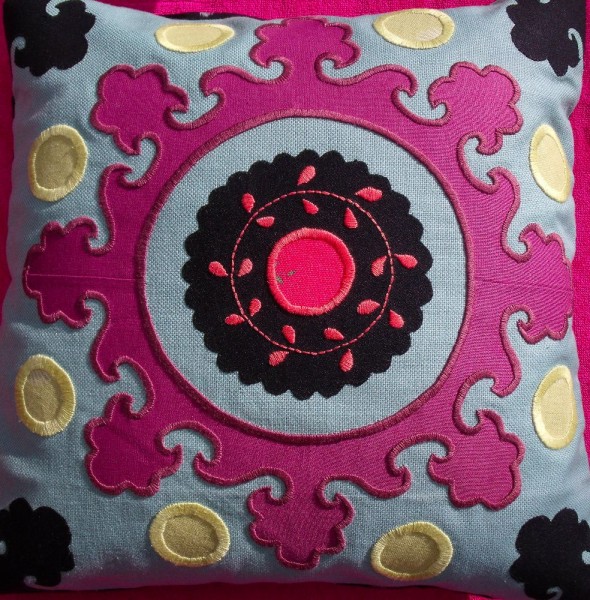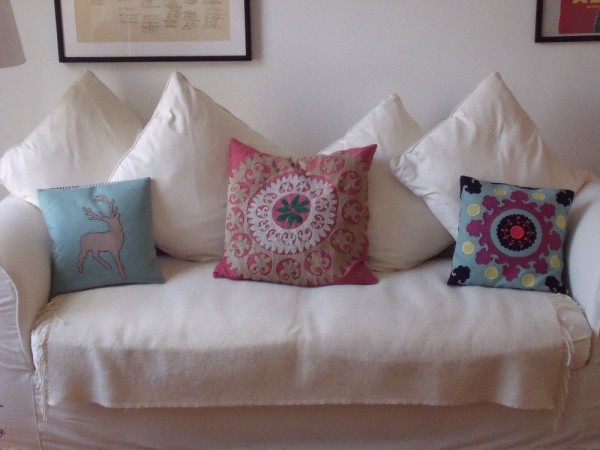Suzani is the generic term for decorative embroidered tribal textiles traditionally made in central Asia in countries like Uzbekistan, Kazakhstan and Tajikistan. In fact suzan is the word for a needle, suzani is therefore needlework and Iran, this particular style of needlework is called suzankari. In recent years it has become extremely fashionable in the west and you can scarcely open a week end home section of a newspaper or a glossy women’s magazine without coming upon a picture of a glorious Suzani bedcover or a few well-placed cushions.
Large pieces of work, like bedcovers, tend to be made of thin strips of hand woven fabric made on a home loom. This is a doubly practical idea because it means the loom doesn’t have to take up too much living space and also that the individual strips can be handed out to several women who can then embroider simultaneously. When the strips are sewn together there is often a pleasing irregularity in the way the main shapes line up which justs adds to the fascination they offer the eye.
The base foundation fabric is usually made of a silk warp and a cotton weft. (warp goes up and down on the loom, weft goes right to left, the rhyming words making it easy to remember which is which). For harder wear, more durable fabrics tend to be made of both warp and weft in cotton – for example horse blankets, which probably shows how much such communities have historically valued their horses. The woven fabric may be lightly dyed to produce a ‘tea wash’ before decoration is added. The embroidery threads themselves are usually silk, although daughter no. 1 bought one from Liberty’s of London that looks like a fine wool (see middle cushion below).
Traditional embroidery is done in chain stitch or basma stitch, also known as Bukhara couching, which is a good way of covering a large area of pattern. As I was after a more immediate result, my version is made from fabrics I had in my fabric trunk and I have appliquéd them on to a linen union base. The black is rough silk, the mauvy-plum is a fine linen while the lime and the scarlet fabrics are quite thick linens. (For a brief period a few years ago Cath Kidston produced a pure linen version of her gypsy print out of which I made a couple of cushions which have now relaxed into an ancient patina of muted colour and softness. The central circle on the cushion above is the last scrap of this fabric and you can just see a peak of sprig of green leaves whose randomness and irrelevance I like.) All edges were then done in satin stitch because I love both doing it and the way it looks. Chain stitch used to be my favourite but for some time now, satin stitch has become the one I’m drawn to, its performance is so soothing that it’s an instant stress reliever. Stitch therapy anyone?
Last Christmas,my son-in-law received the stag while I made the Szuani cushion for daughter no. 1. I can no longer remember what I backed it in but I think it was a stripe.
.


